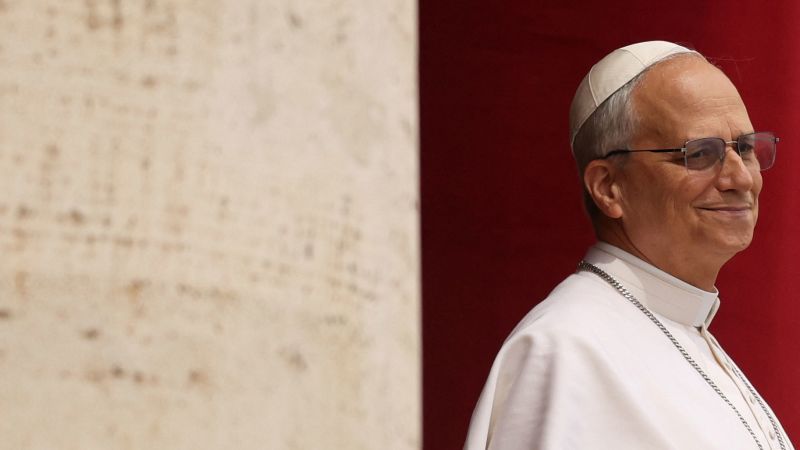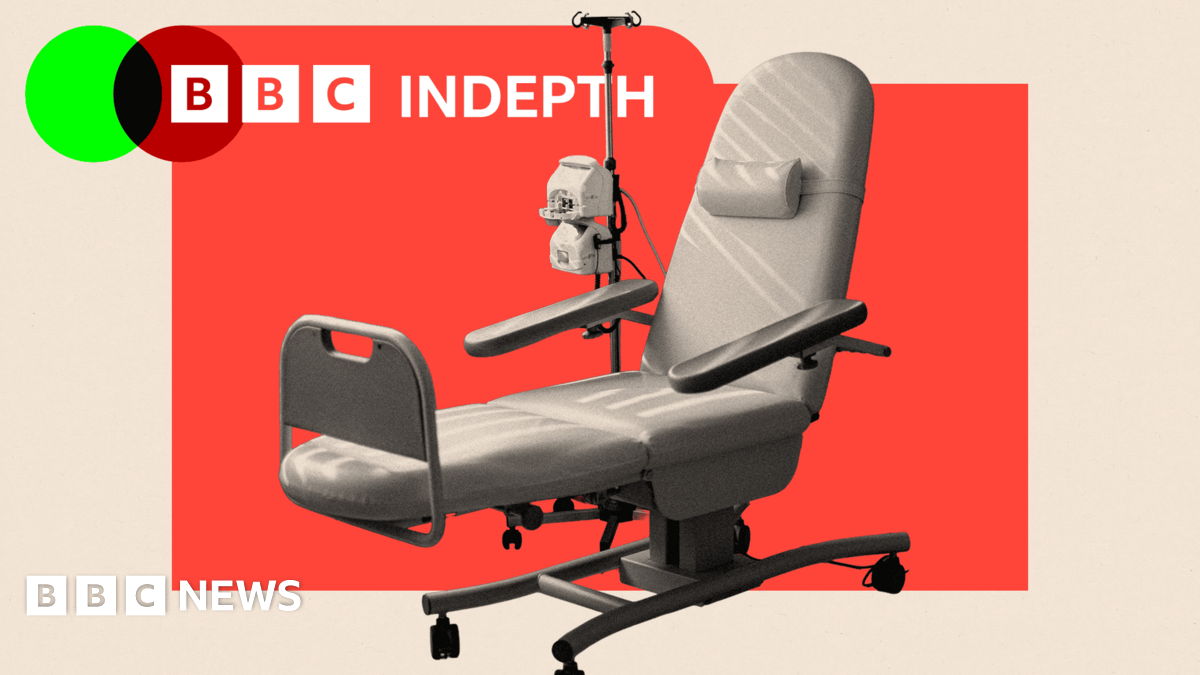The Papacy Of Leo XIII: A Study In Bridge-Building And Quiet Reform

Welcome to your ultimate source for breaking news, trending updates, and in-depth stories from around the world. Whether it's politics, technology, entertainment, sports, or lifestyle, we bring you real-time updates that keep you informed and ahead of the curve.
Our team works tirelessly to ensure you never miss a moment. From the latest developments in global events to the most talked-about topics on social media, our news platform is designed to deliver accurate and timely information, all in one place.
Stay in the know and join thousands of readers who trust us for reliable, up-to-date content. Explore our expertly curated articles and dive deeper into the stories that matter to you. Visit Best Website now and be part of the conversation. Don't miss out on the headlines that shape our world!
Table of Contents
The Papacy of Leo XIII: A Study in Bridge-Building and Quiet Reform
Pope Leo XIII (1878-1903) remains a pivotal figure in the history of the Catholic Church, remembered not for dramatic pronouncements or sweeping changes, but for a shrewd strategy of quiet reform and bridge-building in a rapidly changing world. His papacy, spanning a quarter-century, saw him navigate the complexities of modernity, engaging with emerging social and political ideologies while firmly upholding traditional Catholic doctrines. This approach, while less flamboyant than some of his predecessors or successors, proved remarkably effective in preserving the Church's influence and relevance in the face of unprecedented challenges.
Navigating the Rise of Modernity:
The late 19th century was a period of immense upheaval. The rise of nationalism, socialism, and liberalism challenged the established order, impacting the Church's position in European society. Leo XIII, unlike some who favored staunch opposition, recognized the need for a nuanced response. His encyclical Rerum Novarum (1891), a landmark document, addressed the social question arising from industrialization, advocating for the rights of workers while criticizing the excesses of both capitalism and socialism. This deft maneuver positioned the Church as a voice of conscience in the burgeoning industrial world, attracting both workers and employers to its moral framework. This proactive approach to social justice significantly differentiated Leo XIII from previous papacies, creating a more inclusive image.
A Focus on Social Justice and the Dignity of Labor:
Rerum Novarum isn't just a historical document; it's a testament to Leo XIII's progressive social vision. He championed the dignity of labor, condemning exploitative practices and advocating for fair wages and humane working conditions. The encyclical’s emphasis on the importance of worker cooperatives and the role of the state in regulating the economy has had a lasting impact on Catholic Social Teaching and influenced subsequent papal pronouncements on social justice issues. This forward-thinking approach broadened the appeal of Catholicism, resonating particularly with working-class communities.
Promoting Intellectual Dialogue and Ecumenical Engagement:
Leo XIII understood the importance of intellectual engagement. He encouraged the study of scholastic philosophy and promoted a more nuanced understanding of modern scientific advancements. This approach fostered a more open dialogue within the Church and with the wider intellectual community. Further, he also engaged in cautious ecumenical efforts, fostering better relations with other Christian denominations. While full-scale ecumenism remained a distant goal, his efforts laid the groundwork for future interfaith dialogue and cooperation.
Challenges and Criticisms:
Despite his successes, Leo XIII’s papacy wasn't without its challenges. His approach to modernism within the Church was cautious and at times seemingly contradictory. While he encouraged engagement with modern thought, he also remained vigilant against theological liberalism he perceived as undermining Church doctrine. This cautious navigation often resulted in criticism from both liberal and conservative factions within the Church.
A Legacy of Subtle but Profound Influence:
Leo XIII's papacy wasn't marked by revolutionary pronouncements or dramatic shifts in Church policy. However, his emphasis on social justice, his pragmatic approach to modernity, and his careful bridge-building across ideological divides shaped the Catholic Church's trajectory for decades to come. His legacy continues to influence Catholic social teaching and interfaith dialogue. His insightful understanding of the social and political landscape of his time demonstrates a leadership style that remains relevant and worthy of study today. By skillfully navigating the complexities of a rapidly changing world, Leo XIII secured the Church’s position and laid the foundations for its continued relevance in the 20th and 21st centuries. Understanding his papacy is crucial for comprehending the evolution of the Catholic Church in the modern era.

Thank you for visiting our website, your trusted source for the latest updates and in-depth coverage on The Papacy Of Leo XIII: A Study In Bridge-Building And Quiet Reform. We're committed to keeping you informed with timely and accurate information to meet your curiosity and needs.
If you have any questions, suggestions, or feedback, we'd love to hear from you. Your insights are valuable to us and help us improve to serve you better. Feel free to reach out through our contact page.
Don't forget to bookmark our website and check back regularly for the latest headlines and trending topics. See you next time, and thank you for being part of our growing community!
Featured Posts
-
 Bafta 2025 From Wedding Dresses To Bold Fashion Choices
May 13, 2025
Bafta 2025 From Wedding Dresses To Bold Fashion Choices
May 13, 2025 -
 Disney World News Epcot Fire Ride Closures And More May 11 2025
May 13, 2025
Disney World News Epcot Fire Ride Closures And More May 11 2025
May 13, 2025 -
 Manolo Gonzalez Vergara Shares Intimate Photos Of Sofia Vergara As A Mother
May 13, 2025
Manolo Gonzalez Vergara Shares Intimate Photos Of Sofia Vergara As A Mother
May 13, 2025 -
 Baftas 2025 Red Carpet Fashion Party Atmosphere And Notable Moments
May 13, 2025
Baftas 2025 Red Carpet Fashion Party Atmosphere And Notable Moments
May 13, 2025 -
 Reilly Smiths Determination Fuels Golden Knights Success
May 13, 2025
Reilly Smiths Determination Fuels Golden Knights Success
May 13, 2025
Latest Posts
-
 Brian Cashman Provides Straight Talk On Anthony Volpes Yankees Prospects
Sep 13, 2025
Brian Cashman Provides Straight Talk On Anthony Volpes Yankees Prospects
Sep 13, 2025 -
 Giants Pitcher Chapman Escapes Suspension Receives Fine Instead
Sep 13, 2025
Giants Pitcher Chapman Escapes Suspension Receives Fine Instead
Sep 13, 2025 -
 Benchmarking Cancer Treatment Strategies For The Nhs To Improve Survival Rates
Sep 13, 2025
Benchmarking Cancer Treatment Strategies For The Nhs To Improve Survival Rates
Sep 13, 2025 -
 Unprecedented Score John Dalys 19 On A Single Hole In Pga Champions Event
Sep 13, 2025
Unprecedented Score John Dalys 19 On A Single Hole In Pga Champions Event
Sep 13, 2025 -
 Pikes Journey Concludes Anson Mount Reflects On Star Trek Strange New Worlds Season 3
Sep 13, 2025
Pikes Journey Concludes Anson Mount Reflects On Star Trek Strange New Worlds Season 3
Sep 13, 2025
